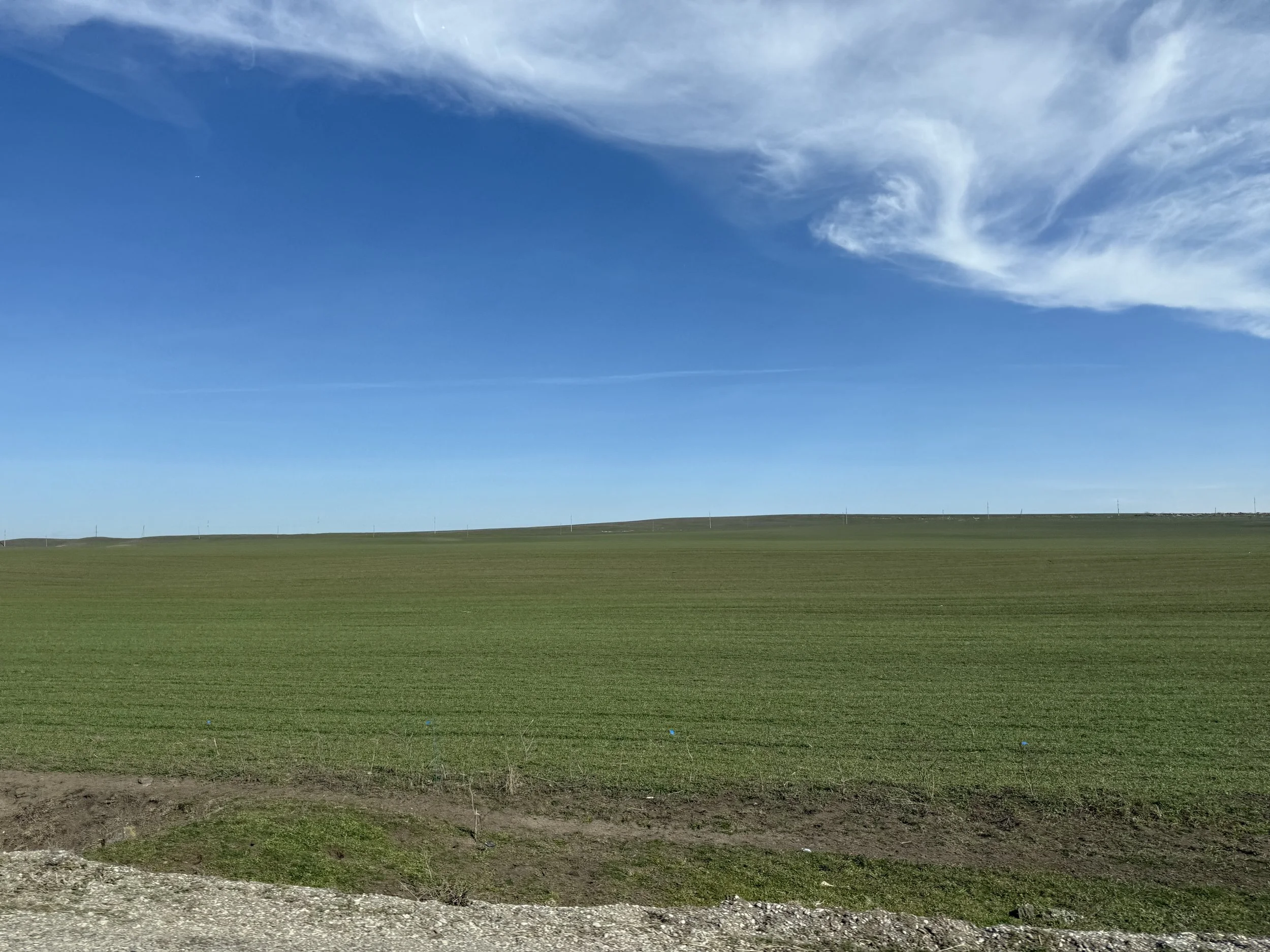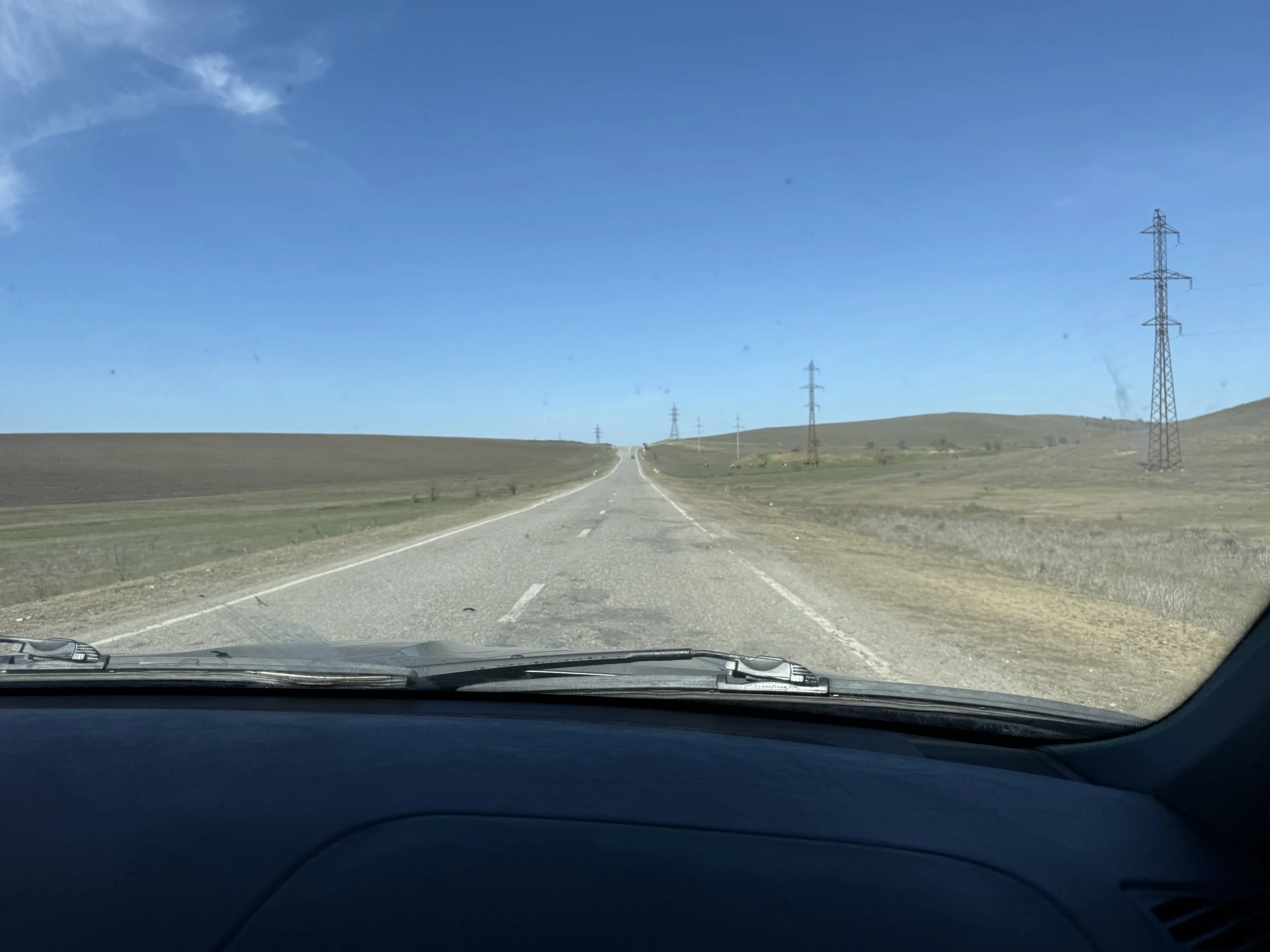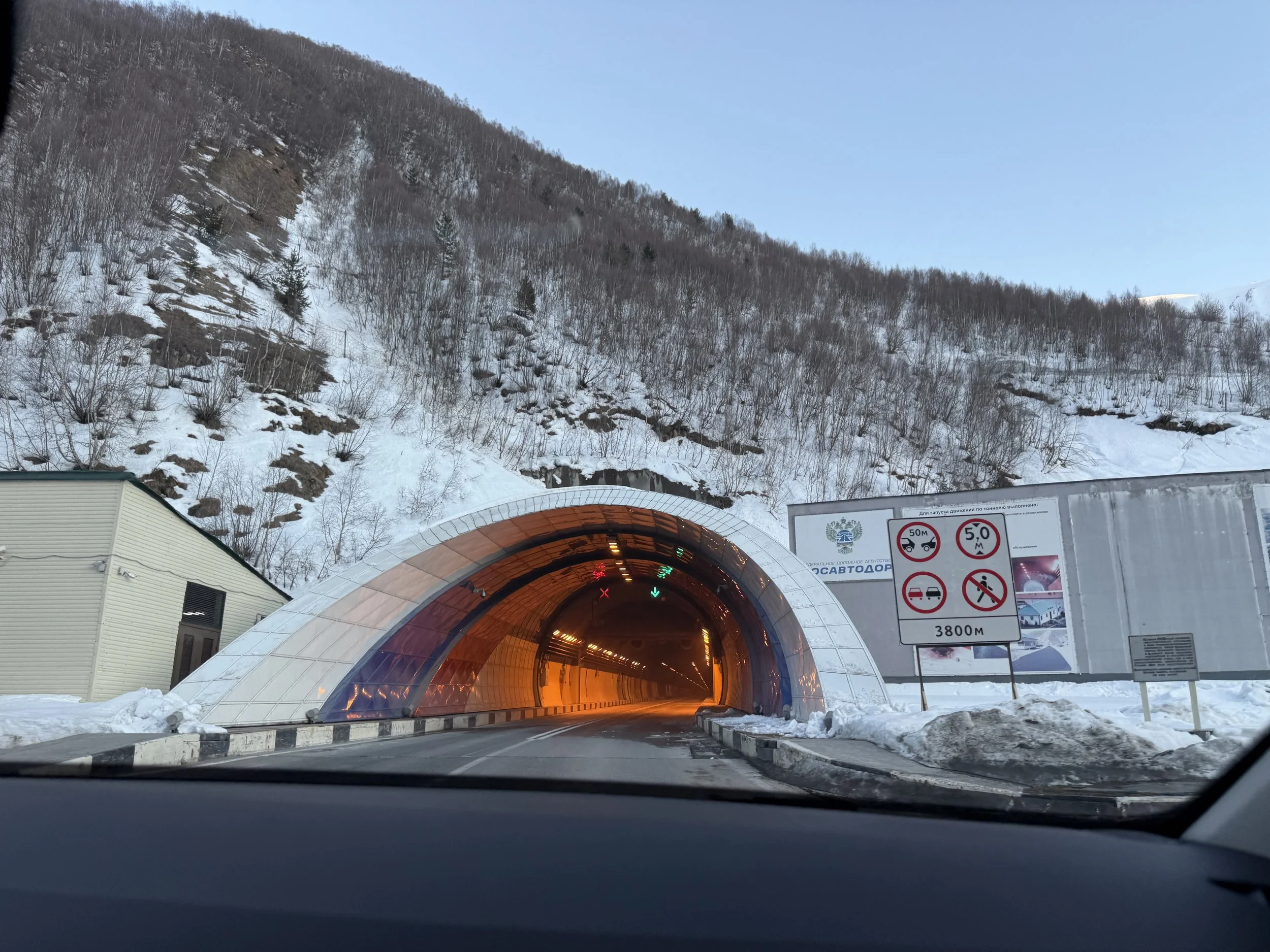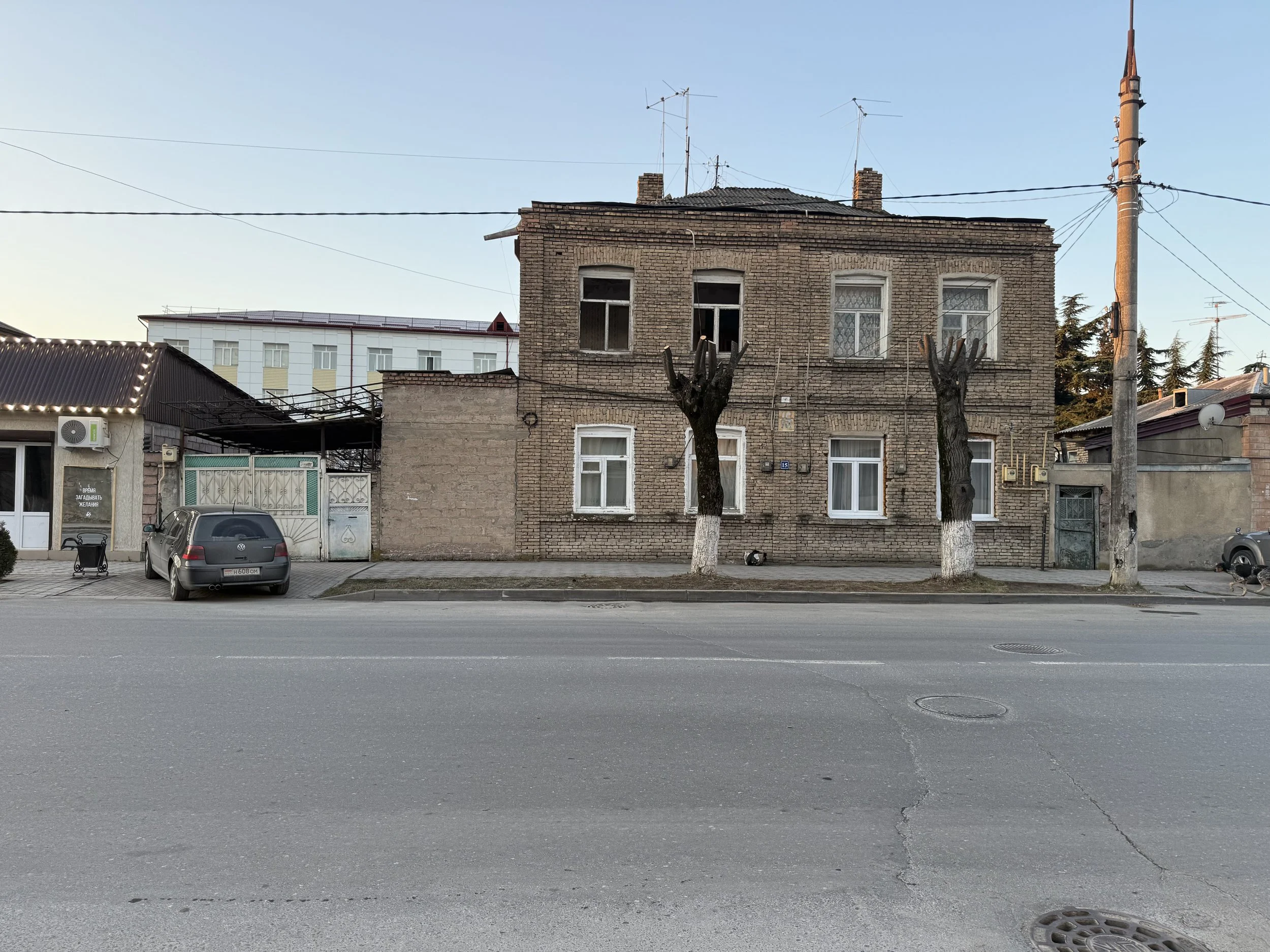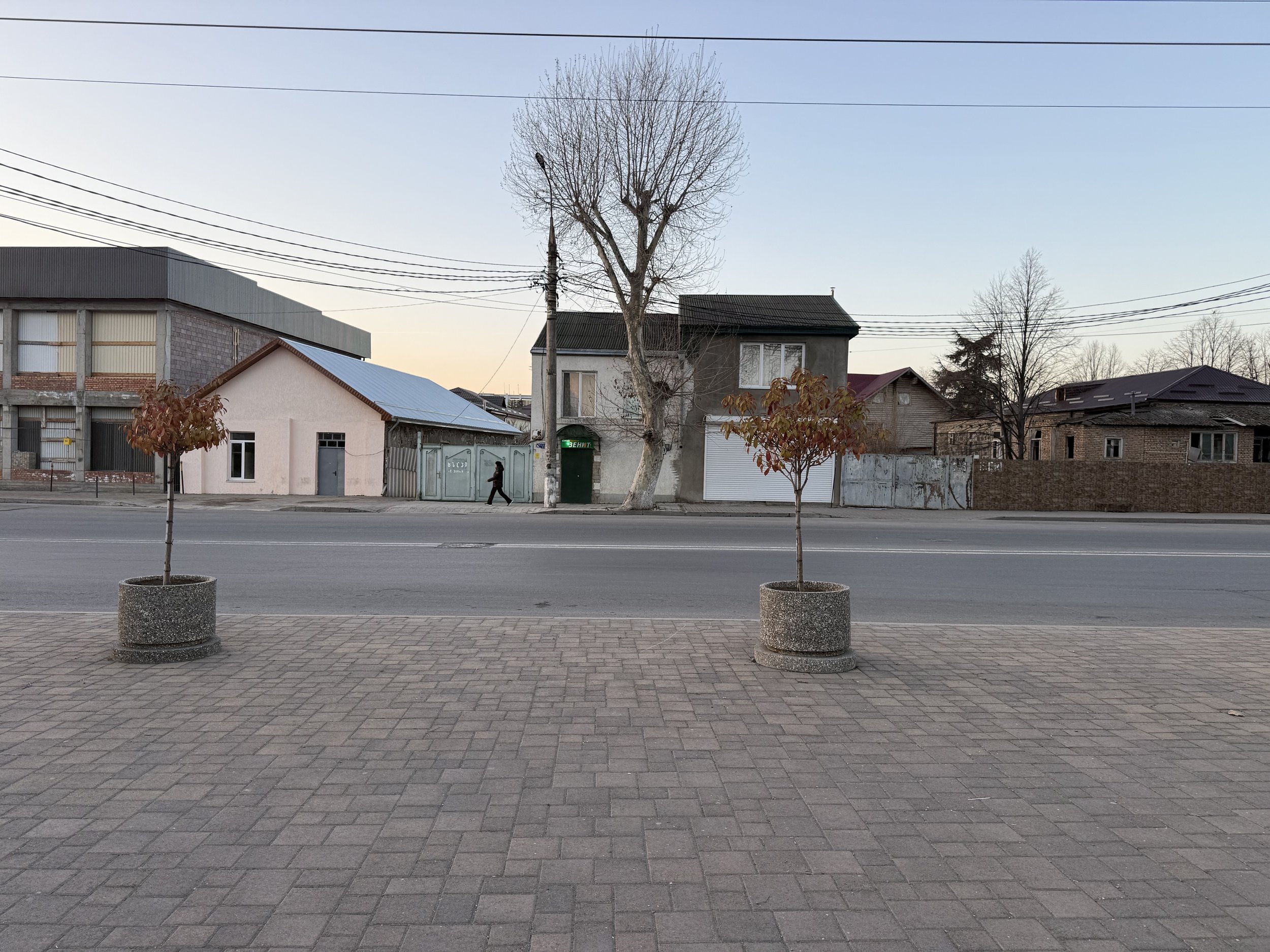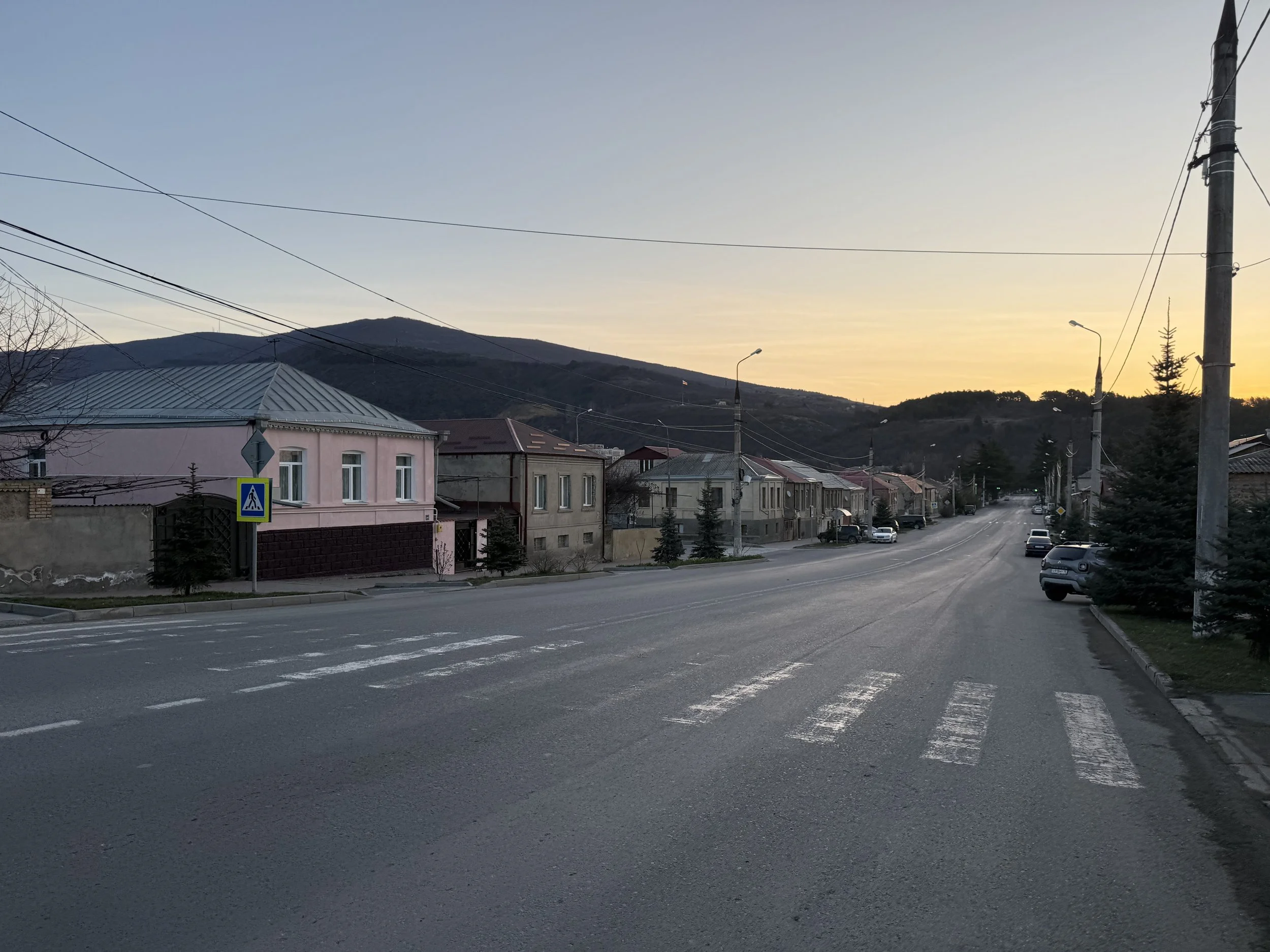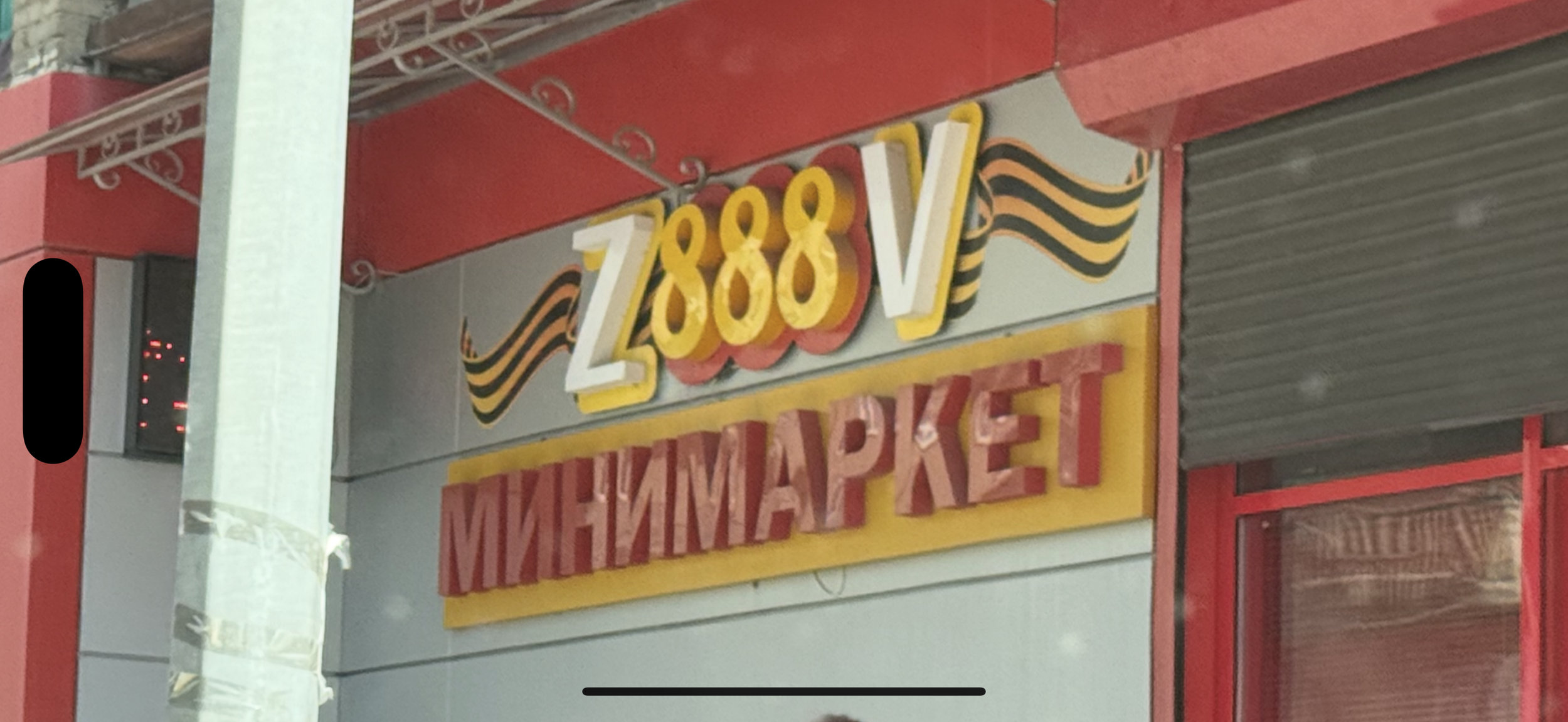South Ossetia
In August 2024 I set out with a few friends on a North Caucasus adventure. On this trip we planned to visit the Russian regions of the Caucasus and the de-facto independent states of Abkhazia and South Ossetia. Unfortunately, on that trip our entry permit / visa was rejected. It was explained to us that the South Ossetian visas are either granted to the entire group or for none of the travelers. This is the first time I have heard experienced such a policy by a country, but that’s their rule.
A couple months after getting back from the Caucasus trip, I reached out to our guide Abdullah about the possibility of applying for a South Ossetian visa. Thankfully, it seems I was not the reason the group was rejected because my application was accepted for entry in the month of March 2025. With just a couple weeks notice, I planned my second trip to the North Caucasus.
There are not so many international flights to this region, but I was able to find round trip flights from Dubai Al Maktoum (DWC) airport to Grozny in Chechnya, Russia (GRV). I planned a buffer day before the flight to Russia in the Emirates since I had separate tickets and needed to change airports (DWC airport does not have as many connections as Dubai international and Abu Dhabi airport).
Day 1:
Originally, I had planned to use this day in the Emirates to see the eastern part of the countryside, including the enclaves of Madha and Nahwa. However, during that time I received notice that my trip to Iwo Jima had been cancelled. So, I spent much of the night shuffling my itinerary around with some friends on the phone. So, I was tired and decided to just rest before the flight.
I stayed at the Staybridge Suites hotel close to DWC airport. This was a great place— comfortable rooms with kitchenette and breakfast included.
Soon enough, it was time to go to DWC to check in for the UtAir flight to Grozny. I was one of the first people in the checkin line, but the station manager had to make some checks for that I was allowed to fly. He said I was the first American he had checking in for the UtAir flights out of DWC. Soon enough, though, I was issued my boarding pass and on the way to Grozny.
Upon landing in Grozny an immigration officer picked me out of line said “S-Sha” (USA in Russian) and handed me an English-language migration card. Such efficiency!
After a quick passport check I was invited to a back room for a few additional questions about where I will go and what I plan to see. Soon enough, I was greeted with a “Welcome to Russia” and on my way.
My guide Abdullah sent his friend to bring me to the hotel since he lives quite far from Grozny. I stayed at the Central City Hotel, which is the same brand of hotel I stayed in Makhachkala last time. With a friendly greeting of a handshake, I was checked in, my breakfast order was taken, and I went straight to sleep.
Day 2:
The following morning I went with Abdullah’s friend to Malgobek, Ingushetia to pick up Abdullah. Beautiful views of open steppes along the way. Soon enough, we had picked up Abdullah and were heading towards Vladikavkaz, the capital of North Ossetia.
Here we picked up a rental car and changed money to Russian Rubles. Soon enough we headed towards the border between Russia and the Republic of South Ossetia.
At the border, went through standard procedure and a few questions. Soon enough, we were on the way through the famous Roki Tunnel that connects the Russian Federation with South Ossetia. The tunnel is beautifully designed: as you enter the tiles show the colors of the Russian Federation’s flag and when you exit the tiles show the South Ossetian flag. I could not help but smile when I saw the “Spasibo Russia” (Thank you Russia) sign for the second time. How I have seen this sign before is a story I will have to leave for an in-person conversation.
The South Ossetian checkpoint was even faster— I just had to sign 2 entry cards and we were through. Seems that after the rigorous check they do for the visa, they don’t ask much at the border!
At the border we met our Ossetian guide Alan who hopped in the car with us, and we headed on the road towards the capital of Tshinkval, which takes around one hour.
We had planned to stay in the Iryston hotel, which is by far the nicest place in the capital. Unfortunately, Abdullah was mistaken on the price of the hotel and had accounted for a much lower nightly price. I could have paid the difference (I really wasn’t much— 6000 rubles a night— around $70), but honestly I was happy to try out a different place.
So, we decided to first take dinner and then decide where to stay. We went to the lovely Vincenzo restaurant. My dear friend Natalia spoke highly of the restaurant, so I was excited to go myself. It’s such a beautiful space with excellent food, attentive service, and fresh made bakery products. Unfortunately, the shashlik machine was not working, so we ordered saj. I had had this once before (in Grozny on my past trip), and it’s essentially fried vegetables and meat. It’s not my favorite meal, but it was hearty and very welcome after a long day on the road.
In the end, we headed to 41 Putin street where my friend Natalia told me there was a hotel. There we found a lovely guesthouse (Hotel Eden) run by the sweetest lady Tina. I was very happy that we decided to stay here. The room and restroom were exceptionally clean, and I loved being able to sleep with the window wide open. The combination of such fresh air and safety is sadly not so common in the world.
Abdullah and I decided to begin the day at 8am the following day. However, him and I actually set our alarms to 9am on our phones. The reason for this is that South Ossetia uses Moscow time, but due to the international recognition of South Ossetia as part of Georgia phones such as iPhones use Tbilisi time when in South Ossetia.
Day 3:
I was still a bit jet lagged, so I woke up quite early and decided to have a walk around the city. It was so calm and serene that early in the morning. I really enjoyed this experience, including being stopped by the police 3 times to check my documents.
Instead of having breakfast at the guest house Alan invited us into his home for breakfast. How could we refuse that? Abdullah had brought at least one tourist here before, and it was definitely a highlight for me. The mother is around 95 years old and still healthy. Alan’s brother Sermet is a urologist and told me about his time attending a peace conference at Harvard where representatives from Georgia and South Ossetia were present. What an experience that must have been. Then we were off we went to the migrations office.
Supposedly here I would be able to get my passport stamped, but sadly the officers told us it was not permitted. They did, however, stamp the migration card as being properly registered in South Ossetia.
We stopped by the iconic sign at the beginning of Tshinkval city and then headed back into town. Alan’s son works at the University Museum and gave us an excellent tour. Then we saw a tank turret left embedded in a building after the war. Today, things are calm in Tshinkval. But this is a solemn reminder of what life was like less than 20 years ago in the 2008 war. We also stopped by the post office where I picked up some commemorative stamps, including one set honoring the relationship between South Ossetia and the Donetsk People’s Republic.
We also passed by a monument built in the past few years to honor the people who fought for the freedom of the Republic of South Ossetia. My friend Natalia who had been here previously made a point of telling me to see it, and I’m happy she did since it had not yet been built when Abdullah was last in South Ossetia.
Then, we headed out of Tshinkval around 2 hours to the city of Leningor. Here live many Georgians still to this day. On the way there was a memorial to the Russians who lost their lives in a traffic accident on the mountain side in 2016. Then we came close to the village of Grom. Interestingly, in order to go to this village, people must pass a border checkpoint since it sits so close to Georgia. It is my understanding, however, that even local citizens are not able to cross the border into Georgia.
Near the town there was a monument honoring those who lost their lives in WWII and a mural.
Soon enough, we came upon an ancient Georgian church. It was built in the year 864. Just unbelievable to me. To think of the history that lies in these mountains.
Eventually, we made it to Leningor.
Here we strolled around the center and ordered some food to eat later and take with us to the place where we would spend the night.
We then went to the palace where the local leader used to live. It has since been converted into an impressive museum with paintings and ancient items found in the area.
We then returned to the restaurant for some excellent shashlik. Here Sermet insisted I try some local wine, as he also did at breakfast. Normally, I do not drink alcohol, but for this special cultural experience I decided to. We also took food to go and headed in the car on the way to a dammed reservoir in the mountains where we would be staying the night.
The ride there was a long one—over 2 hours on an old Soviet road which was in surprisingly good shape (at least in parts) for not having been maintained in 30 years. Unfortunately, Abdullah had been misled about the type of accommodation. It was a dirty cabin not cleaned since it housed Tajik migrant workers. Thankfully, we had some somewhat clean sheets with us, but nevertheless I slept in my clothes.
Abdullah wanted to make an interesting tour with accommodation outside Tshinkval. I think if there is a clean cabin, it will be great. But in this condition, it doesn’t work for most foreign guests (especially since this is only about an hour from Tshinkval anyway).
Day 4:
After heating up the food we brought to the cabin and having a short walk by the lake, our first stop was an abandoned church.
Then we drove through some villages that had been previously inhabited by Georgians. There were signs that ask people to share information anonymously about family members that have gone missing. Heartbreaking stuff. The signs were written in Russian, Ossetian, and Georgian.
Then, as we were driving, we saw a fort that Sermet says was built by a family of Persian descent. The hike up there is not so far from the road, and we were the only ones there. Amazing view of some abandoned villages and the valley below from there.
Abdullah had been here before and pointed out that the oldest oak tree he ever has seen (and me also) is here.
As we headed on the road back to Tshinkval we saw a sign for the road that used to go to Vladikavkaz. However, this road was destroyed by Georgians during the conflict.
We then visited a very solemn graveyard that was constructed on top of what was originally a football field. However, during the siege of Tshinkval there was no ability to access the graveyards that South Ossetians normally use.
There was thankfully time to see the I Love Tshinkval sign. I noticed that in many towns in South Ossetia there is such a sign.
We had to stop at the migration office in order to get my migration card registered when leaving South Ossetia (this is in addition to the processing at the border). It was Saturday so the main guy had to be called. In the end, he told the security guy who was there just to grab the stamp from his desk and stamp the paper. We tried to get that guy to stamp the passport, but he refused. Seems this is unfortunately the policy.
We then headed out of town to the village of Tibet. Here there is a heartbreaking monument made of cars that were destroyed by Georgians. When the main road out of South Ossetia was not possible to cross, South Ossetians tried to escape via a secondary road. But here their cars were torched, and they were killed by the Georgians coming across the border and the Georgian villagers nearby.
In this village we also visited a very old Georgian church. During Soviet times the local Bolshevik leader saved this church from demolition by saying it could be used as a warehouse. Inside there was a lot of scaffolding, as the Georgians had begun restoration work in the early 2000s but were not able to finish it by the time the 2008 war broke out. It is my understanding that this part of South Ossetia was controlled by Georgia up until the 2008 war.
We then went to the town of Znaur. Here there was a bust of Stalin and a water fountain with his head. It is my understanding that Stalin supported South Ossetia being an autonomous region inside of the Georgian SSR, which is why we saw his statue here and photo in the restaurant in Leningor. In this town there is also a monument remembering the wars in South Ossetia in 1989 and 2008 as well as a statue of Lenin.
We then visited two old buildings. One had a large tower that we could climb to get a view and had a church downstairs where there are also pots for making wine.
At Abdullah and my insistence, we headed up the hill to a new landmark. Up here there is an old church and graveyard of a notable family from the area. And this family has now been constructing a new church and statues up here with a view of the valley. Very impressive place. The church is unbelievable with beautiful marble work and stones brought in from Armenia. A very special place.
We then returned to Tshinkval’s Vincenzo Cafe. This is an excellent restaurant right in the heart of the city. Unfortunately, our Ossetian friend left the door open when we parked. My mistake for not noticing. When we returned, however, everything was still there untouched. Wow. What an amazing country.
We ended our evening with a trip to the gas station and checking into the same guest house we stayed the first night.
Day 5:
We agreed to wake up at 5am for the drive back to Grozny which left to Dubai at 2:20pm.
However, the controversy on land ownerships makes phones like iPhones put Georgian time when South Ossetia uses Moscow time. So, Abdullah and I made the mistake of leaving at 4am instead.
In the end it worked well since the South Ossetian checkpoint took some time, and it took a bit over an hour to enter Russia (which actually is very fast).
We made excellent time and after me sleeping a while in the car we made it to Grozny. We found a hotel which had some breakfast despite it being Ramadan.
Then Abdullah brought me early to the Grozny airport. It was good for us to come early so he had the opportunity to drive to Vladikavkaz and make it back to Malgobek, Ingushetia before he gets tired. I was so happy that this trip was a success, and Abdullah did a lot of heavy lifting putting it together and planning a unique itinerary that included places outside Tshinkval.




